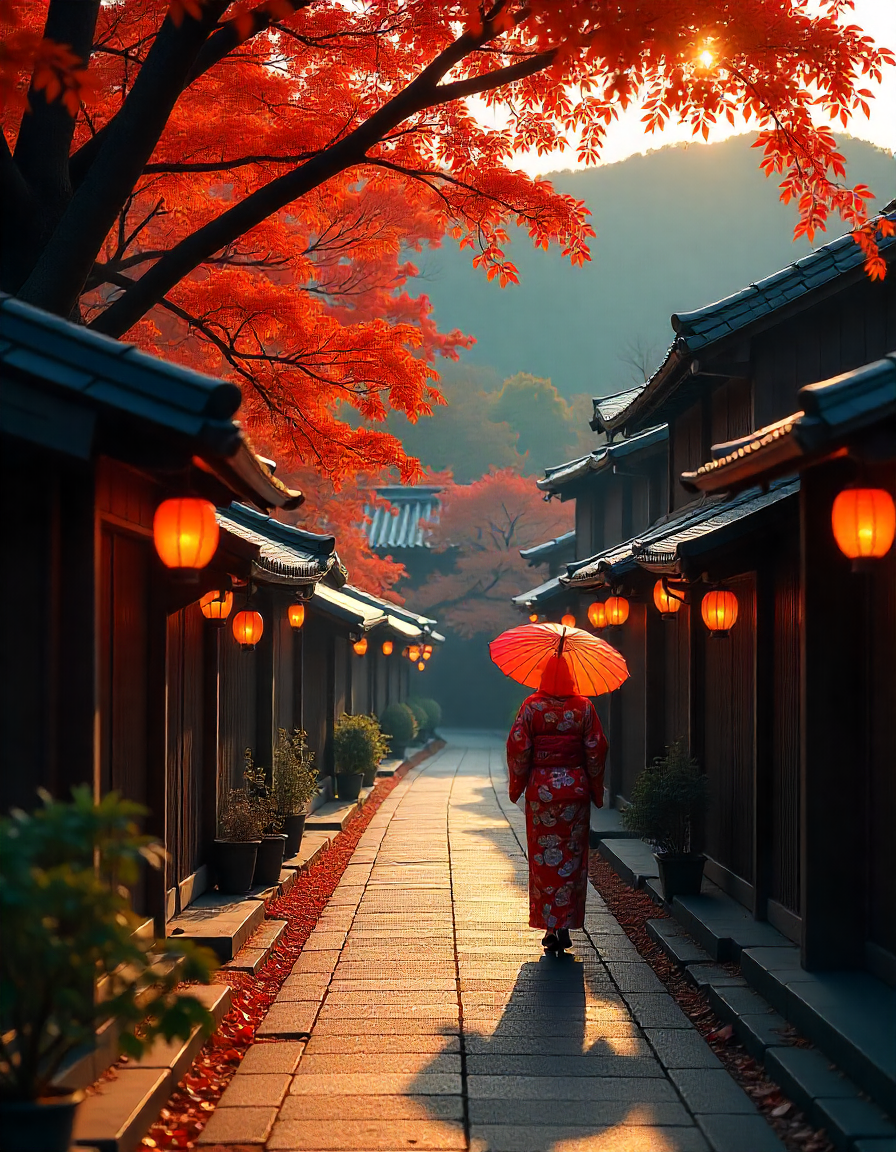Kyoto isn’t the kind of city you “do” in a weekend. It’s a place that invites you to linger — to wander side streets, sip tea in quiet wooden houses, and stumble upon centuries-old shrines without meaning to. Visitors often arrive with a checklist: Kinkaku-ji, Fushimi Inari, the bamboo grove in Arashiyama. These are stunning, of course, but to stop there is to miss the deeper rhythm that gives Kyoto its character.
The Layers of History You Can Still Touch
Kyoto was Japan’s imperial capital for over a thousand years. Unlike Tokyo’s constant reinvention, Kyoto tends to preserve. You can stand at the steps of Sanjūsangen-dō, a hall that has held 1,001 statues of Kannon, the goddess of mercy, since the 13th century — and feel the same hush that pilgrims must have felt hundreds of years ago.
Many of the temples here aren’t just tourist sites; they’re active places of worship. Step inside and you might see monks chanting, the scent of incense curling upward in the dim light. There’s something grounding about that — a reminder that history isn’t just in books, it’s alive and breathing.
Getting Lost on Purpose
One of the most rewarding things you can do in Kyoto is… nothing specific. The city’s layout is a grid, but it’s full of narrow alleys where everyday life unfolds quietly. You might find yourself passing a tiny tofu shop with steam drifting from the doorway, or a craftsman repairing tatami mats in his workshop.
The Gion district, known for its geisha culture, gets crowded in the evenings, but if you wander its backstreets during the day, you’ll see laundry drying above cobblestone lanes and hear the faint clack of wooden sandals. It’s the Kyoto that doesn’t make the travel brochures — and it’s all the more memorable for that.
Seasonal Magic
Kyoto’s beauty changes with the calendar. Spring brings the famous cherry blossoms, when Maruyama Park becomes a soft pink haze and locals gather under the trees for hanami picnics. Summer is marked by the Gion Matsuri, a festival dating back to the 9th century, with towering floats pulled through the streets.
Autumn might be the most enchanting season — the city’s temple gardens blaze with red and gold, especially at places like Eikando and Tofuku-ji. Winter has its own quiet charm, when a dusting of snow turns the moss gardens into something almost otherworldly.
Food: A Reflection of Place
Kyoto’s cuisine is deeply tied to its geography and traditions. Kaiseki, the multi-course seasonal meal, began here as a refined art form, often using ingredients from the surrounding mountains and rivers. A single kaiseki dinner might include delicate sashimi, simmered vegetables, and grilled river fish, each arranged with the precision of a painter’s brushstroke.
For something simpler but equally local, try yuba (tofu skin) dishes in the Nishiki Market area, or warm bowls of matcha soba noodles in a small teahouse. And if you have a sweet tooth, Kyoto’s wagashi (traditional sweets) — often shaped like seasonal flowers — are almost too beautiful to eat.
Where to Stay: Old Meets New
Kyoto offers every kind of lodging, but to feel its essence, consider staying in a ryokan (traditional inn). You’ll sleep on futons laid out on tatami mats, soak in a wooden bath, and eat meals served in your room. The pace of life inside a ryokan slows down; even the act of pouring tea feels intentional.
If you prefer modern comforts, boutique hotels near Kawaramachi blend contemporary design with subtle nods to tradition — think clean lines, natural wood, and floor-to-ceiling windows framing temple rooftops.
Navigating Respectfully
Kyoto’s charm lies in its quiet corners, but those corners are also home to residents. Photography in geisha districts has become a contentious issue, with signs reminding visitors not to block doorways or photograph private property. A good rule: if you have to step off a main street to get the shot, it’s probably better to put the camera down.
When visiting temples, follow local customs — remove your shoes where required, avoid loud conversations, and resist the urge to touch artifacts. The city’s treasures have survived centuries; a little care ensures they’ll last centuries more.
Day Trips That Add Depth
While Kyoto can easily fill a week, short journeys nearby can add perspective. Nara, just under an hour away, was Japan’s first permanent capital and home to the Great Buddha at Todai-ji — a bronze statue so massive you can walk through a hole the size of its nostril in one of the supporting pillars.
For a different kind of escape, head to Uji, a riverside town famous for producing Japan’s highest-quality matcha. You can tour tea fields, join a tea ceremony, and taste the difference between everyday matcha and the deep, rich flavor of ceremonial grade.
Kyoto at Night
When the day’s crowds thin, Kyoto changes. The lantern-lit streets of Pontocho cast a warm glow on the Kamo River. Locals slip into izakayas for grilled skewers and sake. In some temples, seasonal night illuminations allow you to see gardens and maple trees reflected in still ponds, creating a dreamlike scene.
It’s worth setting aside one evening just to walk — no map, no plan, just the quiet company of a city that has seen more seasons, more stories, and more sunrises than we can imagine.
A Final Thought
Kyoto rewards patience. It’s not a city that reveals itself all at once, and that’s the point. The longer you stay, the more you notice — the way morning light falls across temple stones, the sound of bamboo leaves in the wind, the unspoken hospitality of a shopkeeper wrapping your purchase with care.
Travel often tempts us to collect places like stamps. Kyoto asks for something else: to let go of the list, slow your steps, and simply be present.

